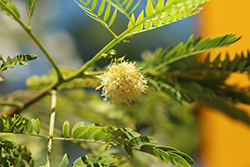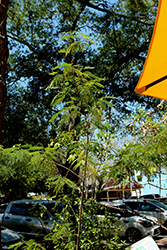It's all about ...
plants

Height: 20 feet
Spread: 15 feet
Sunlight:
![]()
![]()
Hardiness Zone: 10a
Other Names: Coffee Bush, Wild Tamarind, Jumbie Bean
Description:
A fast growing shrub or small tree that is perfect for coastal or rocky sites; white powder-puff flowers from spring to fall, followed by brown pods; very drought and heat tolerant; will aggressively form thickets, considered very invasive in some areas
Ornamental Features
White Leadtree features showy fragrant white ball-shaped flowers along the branches from mid spring to mid fall. It has attractive green deciduous foliage which emerges light green in spring. The tiny oval bipinnately compound leaves are highly ornamental but do not develop any appreciable fall colour. The fruits are showy brown pods carried in abundance from late summer to late fall. The shaggy coppery-bronze bark adds an interesting dimension to the landscape.
Landscape Attributes
White Leadtree is an open multi-stemmed deciduous shrub with an upright spreading habit of growth. Its relatively fine texture sets it apart from other landscape plants with less refined foliage.
This shrub will require occasional maintenance and upkeep, and should only be pruned after flowering to avoid removing any of the current season's flowers. Gardeners should be aware of the following characteristic(s) that may warrant special consideration;
- Spreading
- Invasive
- Self-Seeding
White Leadtree is recommended for the following landscape applications;
- Mass Planting
- Hedges/Screening
- General Garden Use
Planting & Growing
White Leadtree will grow to be about 20 feet tall at maturity, with a spread of 15 feet. It has a low canopy with a typical clearance of 2 feet from the ground, and is suitable for planting under power lines. It grows at a medium rate, and under ideal conditions can be expected to live for approximately 30 years.
This shrub does best in full sun to partial shade. It prefers dry to average moisture levels with very well-drained soil, and will often die in standing water. This plant does not require much in the way of fertilizing once established. It is not particular as to soil type or pH. It is highly tolerant of urban pollution and will even thrive in inner city environments, and will benefit from being planted in a relatively sheltered location. This species is not originally from North America..
This plant is not reliably hardy in our region, and certain restrictions may apply; contact the store for more information.

